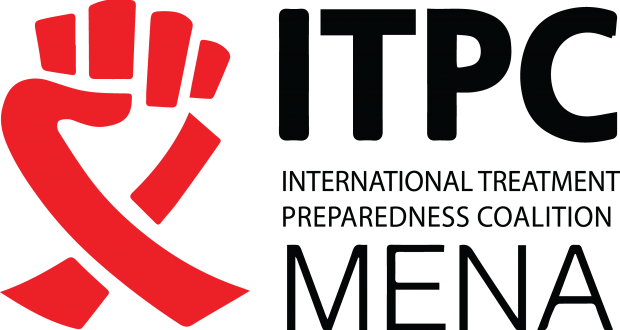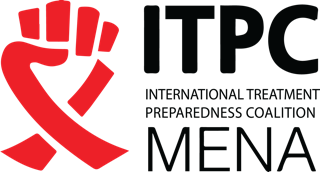Global Fund releases new eligibility list and updated list of projected transitions

Source: Aidspan
The Global Fund has published its 2018 list of countries and components eligible to receive an allocation. The changes from the 2017 list are not extensive.
The List 2018 is available here.
The Global Fund has also published an updated list of components that are projected to transition by 2025 (see the second part of this article for details).
ELIGIBILITY LIST
This section provides a summary of the main changes on the Eligibility List 2018.
Components newly categorized as “eligible”
Only one component has been newly categorized as “eligible” –– Jordan HIV. The Global Fund said that this component has met the eligibility criteria for two consecutive eligibility determinations. The Fund notes that eligibility does not guarantee an allocation.
Components newly categorized as “not eligible”
Four malaria components are newly categorized as “not eligible” on the 2018 list because their countries have been determined to be malaria-free: Egypt, Kyrgyzstan, Syria and Uzbekistan.
Twelve components are newly categorized as “not eligible” on the 2018 list after having been shown as receiving transition funding on previous eligibility lists. These components had already been found to be ineligible for regular funding, which is why they were entitled to receive transition funding in 2017–2019. The 12 components are: Albania HIV and TB; Belize TB; Bulgaria TB; Cuba HIV; Dominican Republic TB; Panama TB; Paraguay TB and malaria; Sri Lanka malaria; Suriname TB; and Turkmenistan TB.
Other changes in eligibility status
Other changes in eligibility status on the 2018 list are as follows:
Algeria HIV. The disease burden classification went from “moderate” to “high,” resulting in one determination of eligibility. Country components must be eligible for two consecutive eligibility determinations to be classified as eligible on the Eligibility List.
Armenia HIV and TB. Armenia is newly categorized as an upper-middle-income (UMI) country as per the three-year average of GNI per capita data (Atlas method) and income classification thresholds published by the World Bank. As a result, Armenia’s HIV and TB components are no longer eligible, but may be considered for a final allocation of transition funding.
Botswana malaria. The disease burden classification went from “moderate” to “high,” resulting in one determination of eligibility. Country components must be eligible for two consecutive eligibility determinations to be classified as “eligible” on the eligibility list.
Ecuador malaria. The disease burden classification went from “moderate” to “high,” resulting in one determination of eligibility. Country components must be eligible for two consecutive eligibility determinations to be classified as “eligible” on the eligibility list.
Iraq TB. In line with the flexibilities allowed under the Challenging Operating Environments Policy, this component was determined eligible for the 2017–2019 allocation period.
Jordan TB. The disease burden classification continues to be “low.” However, Jordan’s income classification has changed from UMI to lower-middle-income (LMI), resulting in one determination of eligibility. Country components must be eligible for two consecutive eligibility determinations to be classified as “eligible” on the eligibility list.
Tunisia TB. This component remains categorized as “not eligible.” Its disease burden classification continues to be “moderate.” However, Tunisia’s income categorization has changed from UMI to LMI, resulting in one determination of eligibility. Country components must be eligible for two consecutive eligibility determinations to be classified as eligible on the eligibility list.
Other modifications in the Eligibility List 2018
The income categorization of eight countries changed although there was no change in the eligibility status of their components. The changes were as follows:
- Cambodia went from low-income to lower-LMI.
- Congo went from upper-LMI to lower-LMI.
- Guyana went from upper-LMI to UMI.
- Mongolia went from UMI to upper-LMI.
- Papua New Guinea went from lower-LMI to upper-LMI.
- Samoa went from upper-LMI to UMI.
- Sénégal went from lower-LMI to low-income.
- Timor-Leste went from upper-LMI to lower-LMI.
(Note that the lower-LMI and upper-LMI categories are a construction of the Global Fund, not the World Bank. The categorizations are based on three-year averages of GNI per capita data.)
The disease burden classifications changed for about 30 components without there being any change in eligibility status. Please see the Eligibility List 2018 for the latest disease burden classifications.
Implications of the changes in eligibility
The changes in eligibility on the 2018 list are not likely to have any immediate impact. The changes will not affect the 2017–2019 allocations because these have already been determined and communicated to countries. The changes may ultimately impact the 2020–2022 allocations, but these will likely not be determined until the last quarter of 2019 and they will likely be based on the eligibility list for 2020 (judging by what happened with the 2017–2019 allocations).
NOTE RE CONFUSING TERMINOLOGY
We have made the following statement several times in this article:
“Country components must be eligible for two consecutive eligibility determinations to be classified as eligible on the eligibility list.”
This statement is confusing. A component may be determined to be eligible, but it is not really eligible until it has been deemed to be eligible for two consecutive eligibility determinations. Even that explanation is confusing. The best way we can describe it is as follows:
- Eligibility determinations are made annually.
- A component that was previously ineligible may become eligible if it is determined to be eligible two years in a row.
- Such component will only be labelled “eligible” on the eligibility list after it has been determined to be eligible for a second year in succession.
That means that components that have been determined to be newly eligible only once are in a kind of “limbo,” pending a second successive eligibility determination. For those who are keeping track, the detailed notes on the eligibility lists are helpful.
PROJECTED TRANSITIONS
The Global Fund’s updated (2018) list of projected transitions is contained in a PDF document (Projected Transitions from Global Fund Support by 2025 –– Projections by Component) available here. The previous projected transitions document was dated 2016.
The table below reflects the updated list of components currently in transition or projected to transition by 2025.
Table: List of components already transitioning or projected to transition by 2025
| Ineligible since 2014– 2016 allocation and receiving transition funding in 2017–2019 |
Projected to become ineligible based on country move to UMI status in 2017–2019 and may receive transition funding in 2020–2022 | Projected to become ineligible based on country move to UMI status in 2020–2022 and may receive transition funding in 2023–2025 |
| Albania HIV, TB Algeria HIV Belize TB Botswana malaria Cuba HIV Dominican Republic TB
Panama TB |
Armenia HIV, TB El Salvador TB, malaria Sri Lanka HIV, TB |
Bolivia malaria Egypt TB Guatemala TB, malaria Kosovo HIV, TB Philippines malaria |
| Projected to become ineligible based on country move to high-income status in 2017–2019 | Projected to become ineligible based on country move to high-income status in 2020–2022 | Projected to become ineligible based on country move to high-income status in 2023–2025 |
| Panama HIV | Malaysia HIV | Costa Rica HIV Kazakhstan HIV, TB |
Notes:
2. Armenia’s income categorization changed to UMI on the Eligibility List 2018.
3. High-income countries are not eligible for transition funding.
The changes from the previous list are minor; for the most part, they involve components moving from one box (i.e. time-frame) to another.
Mauritius HIV was entirely removed from the list. This component had been expected to become ineligible based on the country moving to high-income status in 2023–2025. Mauritius HIV was removed from the list because the latest projections from the International Monetary Fund indicate lower growth for Mauritius than what was previously forecast. As a result, Mauritius’ expected timeline for becoming high-income is now beyond 2025.
The Global Fund states that all UMI countries (regardless of disease burden) and all LMI country components with low or moderate disease burden should begin or build upon existing sustainability and transition planning during the 2017–2019 period. The Global Fund’s projected transitions document contains a list of (a) all components that received a 2017–2019 allocation and whose countries are categorized as UMI; and (b) all components with a low or moderate disease burden that received a 2017–2019 allocation and whose countries are categorized as LMI. There are several changes to these lists compared to the 2016 projected transitions document, based on changes in disease burden as reflected on the Eligibility List 2018.
Aidspan thanks the Global Fund Secretariat for reviewing a draft of this article.










